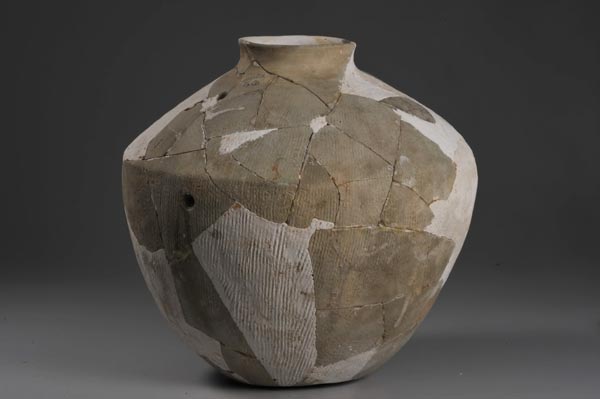 |
|
A pot excavated from the remains. Photo provided to China Daily
|
Archaeologists have made important discoveries in the excavation of an ancient building dating back to the late Shang Dynasty (c.16th century-11th century BC).
The Shaanxi Provincial Institute of Archaeology recently announced the discovery, revealing that the remains of the 4,200-square-meter building on a hilltop in Northwest China's Shaanxi province is the largest Shang Dynasty ritual site on the Loess Plateau, and the second largest found, only bested by the Yinxu Ruins in Anyang, Henan province in Central China.
Located in Xinzhuang village, Qingjian county on the west bank of the Yellow River, the late Shang site lies in the middle of an area of more than 100,000 sq m in which there were other small building ruins, tombs and production traces made by ancient people.
Zhong Jianrong, head of the archaeological team, says the excavation started toward the end of 2012, when the ruins were the target of illegal excavations.
More than 100 artifacts made of clay, bone, copper, wood and stone have been unearthed, including the earliest wooden floors ever found on the plateau.
Zhong says the most important discovery is the 4,200-sq-m structure consisting of a main building surrounded by two levels of corridors. The head of the archaeological team says the ruins of the main building run about 35 meters from east to west in length and 22 meters from south to north in width, while its foundation runs as deep as 2.7 meters.






















 Raymond Zhou:
Raymond Zhou: Pauline D Loh:
Pauline D Loh: Hot Pot
Hot Pot Eco China
Eco China China Dream
China Dream China Face
China Face





